Table of Contents
PRESIDENTIAL DEBATES
Presidential Debates
Risky Business on the Campaign Trail
Third Edition
ALAN SCHROEDER

Columbia University Press
New YorkColumbia University Press
Publishers Since 1893
New York Chichester, West Sussex
cup.columbia.edu
Copyright 2016 Columbia University Press
All rights reserved
E-ISBN 978-0-231-54150-3
Library of Congress Cataloging-in-Publication Data
Names: Schroeder, Alan, 1954author.
Title: Presidential debates : risky business on the campaign trail / Alan Schroeder.
Description: Third edition. | New York : Columbia University Press, [2016] |
Includes bibliographical references and index. | Description based on print version record and CIP data provided by publisher; resource not viewed.
Identifiers: LCCN 2015050152 (print) | LCCN 2015043873 (e-book) |
ISBN 9780231541503 (e-book) | ISBN 9780231170567 (cloth : alk. paper) |
ISBN 9780231170574 (pbk. : alk. paper)
Subjects: LCSH: Campaign debatesUnited States. |
Television in politicsUnited States. | PresidentsUnited StatesElection.
Classification: LCC JF2112.D43 (print) | LCC JF2112.D43 S37 2016 (e-book) |
DDC 324.7/30973dc23
LC record available at http://lccn.loc.gov/2015050152
A Columbia University Press E-book.
CUP would be pleased to hear about your reading experience with this e-book at .
COVER IMAGE: Photo by Doug Pensinger/ Getty Images
COVER DESIGN: Milenda Nan Ok Lee
References to Web sites (URLs) were accurate at the time of writing. Neither the author nor Columbia University Press is responsible for URLs that may have expired or changed since the manuscript was prepared.
This book is dedicated to Carl Schroeder, Jennifer Schroeder Dahlen, Kirsten Schroeder Larkin, and Dan Hammons
CONTENTS
I should say the most important thing about the business of government and politics is not to bore the people.
Richard Nixon to Jack Paar, Tonight Show, August 25, 1960
September 26, 1960. At exactly 7:30 P.M., a shiny Oldsmobile carrying Vice President Richard M. Nixon pulled into an interior drive at the CBS broadcast facility in downtown Chicago. As with other details surrounding the first presidential debate in history, the timing of Nixons arrival at this skating rinkturnedtelevision station had been meticulously plotted. Like dueling divas, Nixon and his opponent, John F. Kennedy, would reach the studio a comfortable quarter hour apart.
For Richard Nixon, the evening began almost as unpromisingly as it would end. Stepping out of the backseat of the car, he banged his knee sharply and painfully against the door; bystanders waiting to greet him saw the color drain from his face. Just two weeks earlier, the vice president had concluded twelve days of hospitalization for a knee infection caused by a similar mishap with a car door. Almost immediately after his release, Nixon had bounded back onto the campaign trail, hoping to make up for lost time with a grueling schedule of cross-country travel. Now, heading into the most critical media event of his life, he looked exhausted, underweight, and wanbetter suited for going to a funeral, perhaps his own, than to a debate, in the view of journalist David Halberstam.
At the WBBM loading dock, Nixon quickly composed himself and started through a high-powered receiving line. Gathered to greet this first of the star debaters were the titans of American broadcasting: fierce competitors like William Paley of CBS, Robert Sarnoff of NBC, and Leonard Goldenson of ABC, momentarily allied in their patronage of the 1960 debates. Working the line, Nixon came to Oliver Treyz, the president of ABC News, who greeted the candidate by asking what no one else had dared: How do you feel?
At a dinner commemorating the debate twenty-five years later, Treyz would recall the moment: I asked the question because he looked ill. And he said, Not so well. I have a temperature of a hundred and two degrees. When Nixon pulled from his pocket the bottle of Terramycin he was taking, Treyz asked if he wished to cancel. Nixon declined, saying he did not want to be seen as a coward.
Poor physical health and a freshly injured knee were only the beginning of Richard Nixons troubles. For weeks, a more vexing problem had been brewing: a lack of appreciation by campaign decision makers for the momentousness of the occasion. Nixon knew the power of television very well, said Ted Rogers, Nixons television adviser, but I dont think the people around him did. According to Rogers, Kennedys staff handled their candidate as a thoroughbred, while Nixons treated theirs like a mule, working him to death.
To prepare for the broadcast, Vice President Nixon studied briefing books by himself, dismissing suggestions that he rehearse with aides. Senator Kennedy, by contrast, brought an entourage to Chicago two days ahead of schedule, and spent much of the weekend holed up in a hotel suite practicing his responses out loud. In the hours immediately before broadcast, members of Kennedys campaign team were still lobbing questions at him.
Fifteen minutes after Nixons arrival at WBBM, the network executives reassembled to greet the man who would emerge as the evenings undisputed champion. Unlike his Republican counterpart, John F. Kennedy arrived fit, rested, and ready. Weeks of open-air campaigning around the country had left Kennedy bronzed. Journalist Howard K. Smith, who moderated the first debate, would compare JFK to an athlete come to receive his wreath of laurel. Said Nixons adviser Rogers, When he came in the studio I thought he was Cochise, he was so tan.
As Kennedy strode down the long corridor linking the driveway to Studio One, Nixon was already on the debate set, posing for cameramen with an air of jocularity that would quickly evaporate. Have you ever had a picture printed yet? Nixon teased one of the photographers, getting a laugh from the group: Youre always taking them, I never see them printed. Kennedys entrance into the studio a few moments later immediately siphoned attention away from Nixon. I assume you two guys know each other, Hewitt cracked, as the rivals extended their hands in greeting. The cameramen clamored for shots of the pair shaking hands; over and over they obliged, their chitchat muffled by the snap of flash bulbs.
You get that tan the way I do? Nixon asked Kennedy, prefiguring postdebate interest in the candidates appearance. Riding around in open cars? Its the wind, you know, not the sun. Though Kennedys answer is not recorded, it is apparent from the question that the vice president was struck by how well his opponent looked. Did Nixon sense that his own posthospital pallor was no match for Kennedys summer glow? For weeks, television consultant Rogers had urged Nixon to use a sun lamp. Like most of Rogerss advice, the recommendation went unheeded.
After shooing away the photographers, Don Hewitt ushered Kennedy and Nixon to their seats on the debate set for a quick orientation. Footage of this meeting shows Nixon casting his glance at a monitor off-screen, uncomfortably shifting positions in his chair, seeming to pass in and out of a daze. Kennedy, who does not deign to look at Nixon, occupies his side of the studio set with the casual presumption of a lion in his den.
To both debaters, Hewitt offered the services of CBSs top makeup artist, imported from New York for the occasion. When Kennedy said no, Nixon quickly followed suit, in a show of machismo that proved to be a serious blunder. What I tried to explain to Dick, Rogers later recalled, was he has a certain characteristic of his skin where its almost transparent. And it was a very nice thought to say I dont want any makeup, but he really needed it in order to have what we would call even an acceptable television picture.


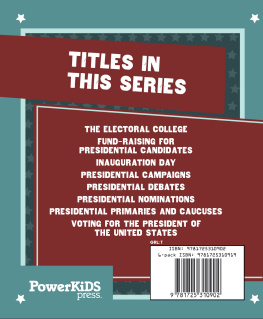

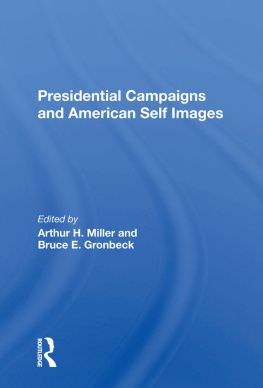
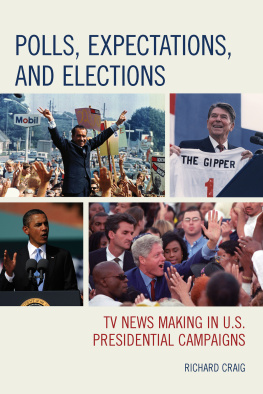
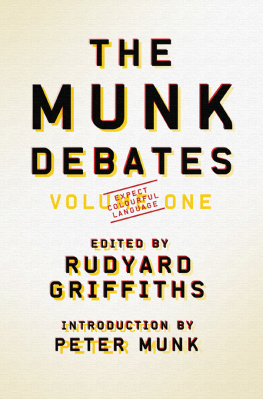
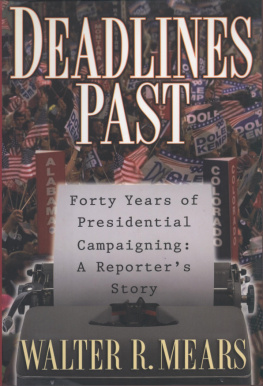

 Columbia University Press New York
Columbia University Press New York